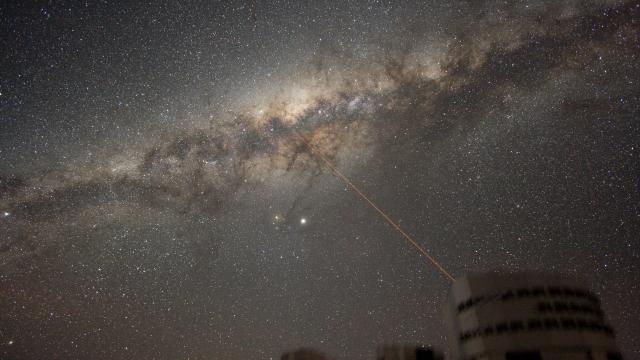Meet J0815+4729. If it were a Pokémon, it would be kind of like the Milky Way’s level-three Rattata.
A team of Spanish scientists spotted the star with a pair of telescopes and determined its age based on the amount of heavier elements it contained. The star was born perhaps 300 million years after the Big Bang, or 13.5 billion years ago – one of the oldest ever spotted. Our Sun, by comparison, is a youthful 4.6 billion years old.
“Identifying and characterising chemically these rare breed of stars will certainly shed light on the early chemical evolution of the Galaxy and the nature of the first stars,” the authors write in the paper, accepted to the journal Astrophysical Journal Letters.
The researchers used spectrographs on the William Herschel Telescope and Gran Telescopio de Canarias in the Canary Islands. These devices can detect the different elements present in a star based on the wavelengths of light it gives off.
J0815+4729 had very few elements heavier than hydrogen and helium, and very little in the way of iron. Iain McDonald, a researcher at the University of Manchester who was not involved with the study, explained to me:
Most of the elements in J0815+4729 seem to be fairly light, like carbon and calcium. Normally iron is one of the easiest elements to find in stars. There is so little iron in J0815+4729, less than a ten-millionth of the iron in the Sun, that the authors can’t even measure it. In stars like this, all the [elements heavier than hydrogen and helium] may been made when single, massive star – one of the first generation of stars in the Universe — underwent a supernova explosion just before this star was formed.
If that sounds counter-intuitive, just think that stars are like Pokémon. With each evolution, or supernova, they change form and acquire new traits – in this case, heavy elements. The Pokémon from the earliest parts of the game are in the weakest, least-evolved form. So if you look through someone’s stored Pokémon and see a weak first evolution, like a level three Rattata, there’s a pretty good chance it’s one of the first ones they caught.
J0815+4729 is ancient, but it isn’t alone. McDonald pointed out that it’s the second most “carbon-rich, metal-poor,” after another star discovered by an Australian team called SMSS J0313−6708.
There’s more work remaining for the Spanish team, like acquiring better-resolution spectral lines, which would help them better classify the star and reveal even more about our galactic history.
[arXiv]
